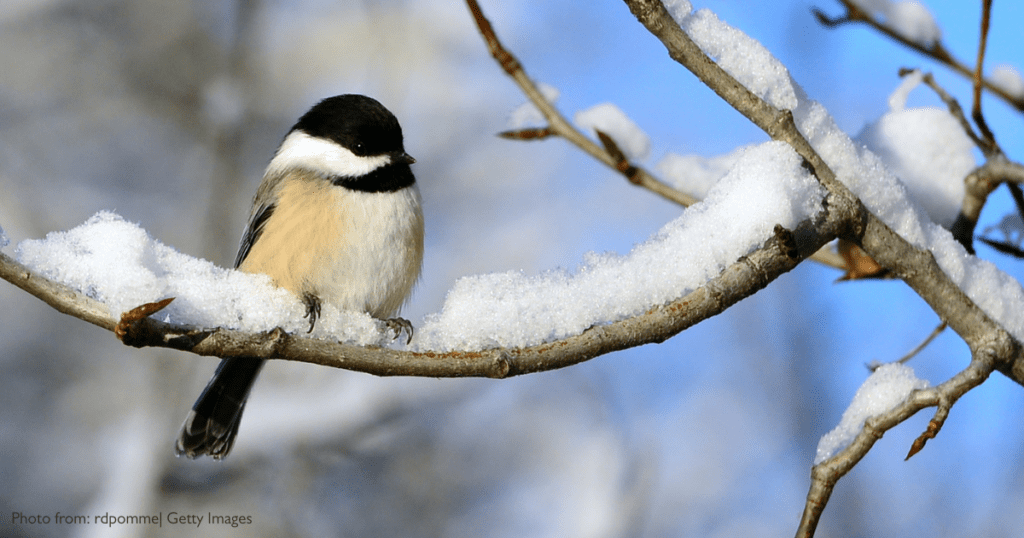
As temperatures plummet in British Columbia, winter-active animals are on a full-time mission to stay alive. They must often endure harsh cold spells, deal with food shortages, and navigate deep snow. Each animal has specialized adaptations to help them survive in cold conditions, but that doesn’t mean this time of year is easy on wildlife.
In this harsh environment, it becomes clear that animals are the superior survivalists, thriving even in the most extreme conditions. If humans were left in this wilderness without fancy supplies for any extended period, it’s evident that wildlife’s adaptability and resilience would outshine our own. So, how do they do it?
Insulation through Fur and Feathers:
One of nature’s most straightforward solutions to combat the winter is with thick, insulating layers of fur and feathers. Grizzly bears, for example, have a dense coat that acts as a thermal shield against the cold, wind, rain, and snow. Their fur consists of two layers: a dense underfur and longer guard hairs, creating an insulating air pocket that minimizes heat loss. Similarly, the snowy owl has uniquely designed feathers with water-resistant structures that also help create a layer of warm air close to the skin. These insulating structures help maintain crucial body temperature allowing both the owl and the bear to conserve energy when finding food is an increased challenge.

Snowy Owl
Torpor and Hibernation:
Some animals enter hibernation to cope with harsh winter conditions. A common misconception is that bears hibernate during the winter. Due to their large size, bears cannot lower their body temperature like smaller mammals, so they enter a lighter state of sleep called torpor. During torpor, their heart and breathing rates fall to save energy but they can still wake up during the day and move around to defend their territory.
True hibernation involves a lowered body temperature, slowed breathing, decreased heart rate, and a significantly reduced metabolic rate. Hibernation isn’t just a deep sleep; metabolism drops to less than five per cent of normal. Animals prepare by eating extra food and storing it as brown fat, generating heat around vital organs. Little brown bats exemplify true hibernators, producing heat in a process called nonshivering thermogenesis while spending months in caves.
Subnivean Zones:
Beneath winter’s snowy blanket lies the subnivean zone, where small mammals like voles and mice construct intricate tunnel systems. These networks provide a sheltered haven insulated by the snow’s thermal properties, shielding the inhabitants from temperature extremes and predators. These small mammals rely on the stored food in underground pantries reserves within their tunnels to survive. They gather and hoard seeds, plant material, and other food items during more abundant seasons, ensuring a vital food source during winter scarcity.

Deer Mouse
Frozen Frogs:
Wood frogs in the coldest parts of British Columbia have an extraordinary adaptation to survive freezing temperatures. They seek refuge under leaf litter or underground, entering a frozen state where their hearts stop pumping, organs cease functioning, and they don’t breathe. Their liver converts energy stores into glucose, resulting in 80 times more sugar in their blood than the average human’s. This excess sugar acts as a natural antifreeze, preventing ice formation in the blood and reducing water drawn from the frog’s cells. This adaptation allows them to thaw from the inside out when spring arrives, reanimating after a period that mimics death.
Butt Breathing:
B.C.’s turtles exhibit a unique cold weather adaptation during winter when frozen ponds make surfacing for air impossible. Using a process called cloacal respiration, turtles absorb oxygen through the cloaca, located under their tails. In a less scientific description, it’s like breathing through their butts. The cloaca serves various functions, including excretion, reproduction, and, crucially, oxygen uptake. Unlike freeze-tolerant wood frogs, adult turtles can’t regulate body temperature, requiring them to find warmer areas in the mud at the bottom of ponds and lakes. Brumation, like hibernation, slows their metabolism slows, and their heart rate decreases to one beat every 10 minutes.

Columbia Lake North – Wetlands Conservation Area in the winter
Big Brain:
The black-capped chickadee, a small bird weighing not much more than a Triple A battery, has no need to fly south as they are able to brave Canadian winters. These birds are scatter hoarders, storing food items in numerous locations. Retrieving their hidden stashes requires enhanced spatial memory, crucial during winter when food is scarce. The solution lies in the chickadee’s ability to enlarge a brain region called the hippocampus. In the lead-up to winter, the chickadee’s hippocampus can grow by as much as 30 per cent. The bird’s brain will periodically replace neurons, discarding old memory cells to make space for new ones, aiding in their ability to store and retrieve hundreds of seed locations.

Black-capped chickadee
You can help wildlife by making their lives a bit easier this winter. Allow your grass to grow longer, creating a shelter for overwintering insects. Come the spring, these bugs will serve as a protein-rich food source for fledgling birds. Transform your yard into a hibernation haven by leaving piles of leaf litter and brush, offering refuge for creatures like frogs, chipmunks, marmots, and hares. Let your plants to go to seed to sustain birds during times of food scarcity and serve as a nutrient source for insects. And, if you have a pond or bird bath, keep an open hole in the water to provide birds and mammals with a vital source of drinking water.
From grizzly bears’ thick fur to small mammals’ intricate subnivean tunnels, each species must face winter’s challenges. By understanding and appreciating these natural adaptations, we deepen our connection with the diverse ecosystems that make British Columbia a haven for wildlife, even in the coldest months of the year. 
 By Shannon Marshall | Masters Student, Science & International Nature Conservation
By Shannon Marshall | Masters Student, Science & International Nature Conservation
